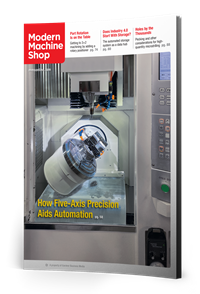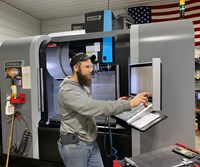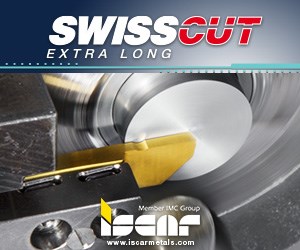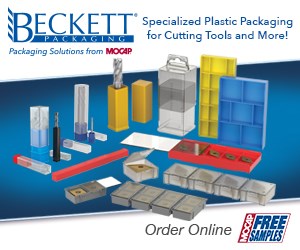End Mill Comparisons in CFRP, Part 3 - Conventional PCD Tool
Video shows the performance of coated carbide, diamond-coated, PCD and veined PCD tools in carbon fiber reinforced plastic. Part three in a four-part series.
Smith MegaDiamond Inc. and Star Cutter Company compared the performance of various end mills in carbon fiber reinforced plastic (CFRP). The tools tested included a coated carbide end mill, a diamond-coated end mill, a conventional PCD end mill with straight flutes, and a “veined” PCD end mill featuring a vein of PCD within a helical slot in a carbide tool body.
The table below summarizes the test parameters. Shown here is the video of a straight-flute segmented PCD tool. Jeff Michael, engineering manager for Star Cutter, comments, “Notice the sound includes pounding. This is the effect of the cutter loading and unloading because of the straight flutes. Also, there are uncut fibers because of the lack of shearing geometry.”
To see the next video in this testing, click here.
|
|
Tool Type |
|||
|
Ø .500 in. |
Solid Carbide |
CVD Diamond |
PCD |
Veined PCD |
|
Flute angle |
30° helical |
10° helical |
7° skew |
30° helical |
|
Spindle speed (rpm) |
3,000 |
4,600 |
12,000 |
18,000 |
|
Chip load (in./tooth) |
0.0035 |
0.0035 |
0.001 |
0.0065 |
|
Machine advance (in./min.) |
42 |
64 |
36 |
470 |
|
Radial depth (in.) |
.050 |
.050 |
.050 |
.050 |
Cutting speeds and feed rates were recommended parameters from each tool’s manufacturer.
Editor’s note: To read the next part in the series, click here.
Related Content
-
Choosing Your Carbide Grade: A Guide
Without an international standard for designating carbide grades or application ranges, users must rely on relative judgments and background knowledge for success.
-
New Modular Tool Options for Small Spindle Milling
Tooling options have been limited for small spindle milling applications. Now modular, indexable systems are available that provide broad flexibility to get the right cutter for the job with less inventory and at lower cost.
-
Best Practices: Machining Difficult Materials
Cutting hardened steel, titanium and other difficult materials requires picking the right tools, eliminating spindle runout and relying on best practices to achieve tight part tolerances.








.png;maxWidth=300;quality=90)






